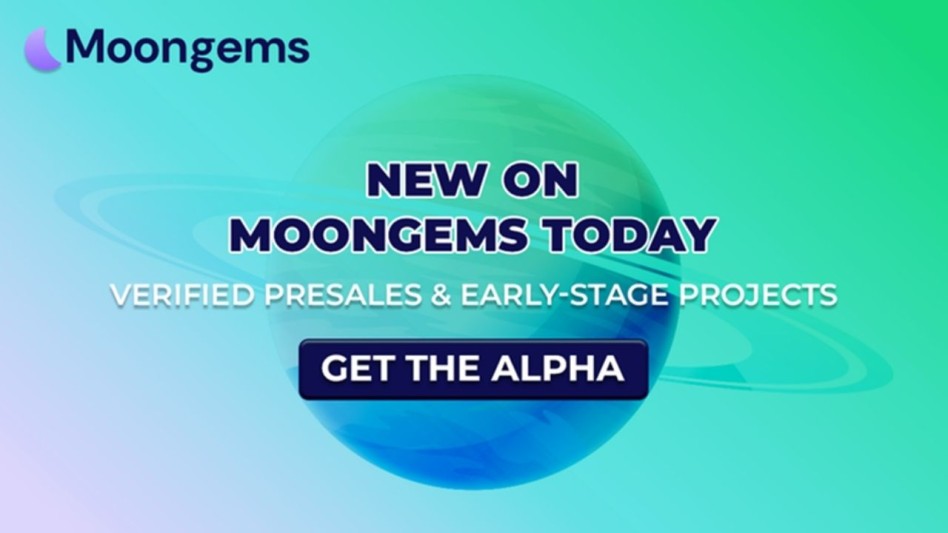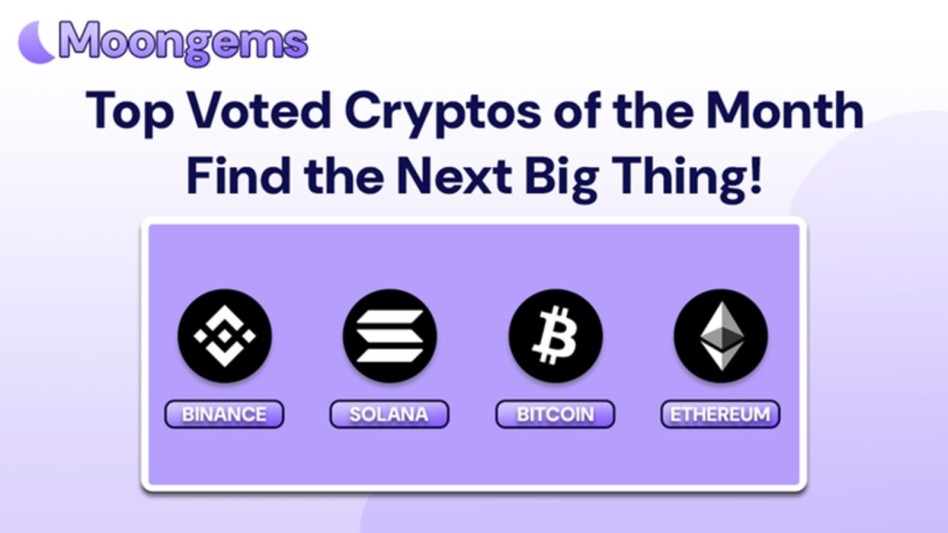A presale can be a fast path to early entry—or a quick way to lose capital. The difference is process. This guide breaks DYOR (Do Your Own Research) into clear steps any investor, developer, or analyst can follow. It uses plain language, repeatable checks, and links to trusted sources. It also notes where analysts watch Solana activity and how narratives can drive attention. For discovery, presale calendars, token dashboards, and social-sentiment snapshots, MoonGems centralizes research signals so investors can compare terms, vesting, and liquidity before committing.
This article is for informational purposes only and does not constitute financial, legal, or tax advice.
Why DYOR Matters in Presales
Presales move fast. Terms change, narratives swing, and incentives can be misaligned. A simple, repeatable checklist helps cut noise. DYOR here means reading the documents, verifying on-chain facts, stress-testing tokenomics, and mapping real risks—technical, market, and legal. Security and disclosure rules are evolving in the U.S. and EU, and AML standards continue to tighten, so process matters more than hype.
How to Use This Guide
Work through each section in order. Save a one-page checklist. If a project fails any “must-have,” pause. If facts conflict, size down. If data is missing, walk away. The goal is to make better decisions with fewer surprises.
The DYOR Workflow for Meme Coin Presales
Before the steps begin, set up a simple workflow: one notes doc, one wallet for testing, and a single source for official links verified from at least two channels. The goal is to turn hype into facts you can check. If discovery help is needed, bookmark MoonGems for presale calendars, token dashboards, and vesting snapshots.
Step 1: Read the whitepaper like an auditor
A strong whitepaper does four things: explains the problem, shows how the product works, maps token economics, and sets a timeline with clear milestones. In the EU, MiCA outlines what a compliant crypto-asset whitepaper must include for public offers and trading admission. That means specific content, formats, and disclosures that make promises testable. When documents are vague, treat it as a red flag.
What to pull into notes
- Product scope and roadmap dates
• Token utilities and rights (if any)
• Supply schedule and unlocks
• Governance model, voting thresholds, quorum
• Disclaimers and geo-restrictions
Reality check
Cross-verify claims on explorers and official repos. If the whitepaper promises “live staking,” look for on-chain contracts and recent commits. If it claims a fixed tax or burn, confirm in code or with verified contract reads.
Step 2: Tokenomics you can check in minutes
Write down three numbers: total supply, circulating supply at launch, and presale price. Then calculate the basics.
- Fully Diluted Value (FDV) = Price × Total Supply
• Market Cap (at listing) = Price × Circulating Supply
Now map unlocks. Big cliffs often create pressure on specific dates. If the design uses buy/sell taxes or burns, confirm they are enforced in the contract and can’t be switched off without governance. For execution quality after listing, remember that liquidity depth and slippage settings shape real fills; deeper pools reduce price impact on each trade.
A quick sensitivity test
- How many unlock days fall in the first 90 days?
- What percent of supply sits with the top 10 wallets?
- If liquidity is only a small share of FDV, how far can a single order move price?
Step 3: Team history and proof of work
Real teams leave trails: shipped apps, code commits, audits, bug-bounty threads, credible advisors. Look for standard, well-tested components in smart contracts. OpenZeppelin libraries are widely used baselines for ERC-20, access control, and upgrades; their docs show how common patterns reduce error when used correctly.
Red flags
- New accounts with no prior commits
- “Audit pending” for months
- Privileged roles without timelocks
- Upgradable proxies with no governance guardrails
Step 4: Community and narrative checks
Meme coins run on culture. Healthy communities do more than post memes—they file issues, test features, and challenge weak ideas. Track engagement quality over raw follower counts. Analysts and media often watch Solana because of high on-chain activity and vibrant retail flows. CoinDesk has covered how demand spikes and network usage can feed bullish momentum; Messari’s quarterly reports track shifts in volume, fees, and DeFi share. Use these as context, not signals to buy. CoinDesk+1
Quick scan
- Are updates specific, dated, and testable?
- Is growth organic, or paid shills and copy-pasted replies?
- Do moderators answer technical questions, or redirect without detail?
Step 5: Security review (no code degree required)
Security risk never goes to zero. Chainalysis estimates roughly $2.2B was stolen in 2024 across hundreds of incidents, with private-key compromise a major driver—proof that audits and key hygiene matter at least as much as hype. Read the audit summary, the list of issues, and confirmed fixes. If the audit predates major code changes, ask for a new one. Chainalysis
What to verify
- Named auditor and public report
- Severity of findings and remediation notes
- Multisig details for treasuries and privileged ops
- Bug bounty scope and payouts
Step 6: Legal, geographic, and AML checks
In the U.S., the SEC tells buyers to ask if a token sale is a securities offering and whether it is registered or exempt. The agency’s investor bulletin lists questions and red-flags worth reading before any transfer. In the EU, MiCA sets uniform disclosure and conduct rules for issuers and service providers. Globally, the FATF “Travel Rule” expands AML expectations for VASPs, and implementation remains uneven by country. If a sale blocks your region or requires KYC, assume compliance obligations apply at listing too.
Step 7: Liquidity plan and execution
Most presales list on DEXs. Liquidity depth, fee tier, and pair choice shape first-day trading. Uniswap’s materials explain why price impact and slippage differ and how deeper pools stabilize fills. If the team promises “locked liquidity,” ask where, how long, and on what terms. Confirm the actual LP token lock on-chain.
Checklist before listing
- Planned pool size at T0
• Initial market makers, if any
• Slippage guidance for buyers
• LP lock transaction and locker address
Step 8: Post-sale monitoring
After entry, trust data. Track holder concentration, unlocks, liquidity changes, and exchange flows. For networks like Solana, real-time dashboards show TPS, success rates, and fee trends to gauge stress during hype windows. Watching these helps separate genuine demand from short-lived spikes. Solscan
What good looks like
- Gradual broadening of holders
- Clear shipping cadence against the roadmap
- Deepening liquidity or stable depth vs. volume
- Transparent post-mortems when issues occur
Case Studies (Anonymized) and Lessons
These short snapshots are anonymized composites drawn from public launches and audit reports. They highlight repeat patterns in presales—unlock timing, contract switches, and liquidity depth—and show how a simple checklist would have flagged the risk early. They are for education, not advice.
A staged presale with cliff risk
A project sold 15% in presale and unlocked 20% of team tokens at day 30. Price rallied at listing, then slumped on unlock day as insiders sold. Lesson: match unlock calendars to real delivery and size entries around known cliffs.
A “static tax” that was not so static
A meme token advertised a fixed 2% buy/sell tax to fund liquidity and burns. The contract had an owner-only function to change fees at will. Fees jumped to 10% during peak volume. Lesson: read contract variables and role permissions; verify with a scanner.
The quiet win
A team shipped a testnet, ran a public bug bounty, and locked LP for a year. Growth was steady, not viral. Over time, deeper pools kept slippage low and drew larger orders. Lesson: boring transparency beats loud promises.
Data-Driven Shortcuts for Busy Readers
When time is tight, use quick ratios—FDV, first-day market cap, unlock density, and a simple liquidity coverage ratio—to turn noisy narratives into actionable numbers.
Micro-model the early days
- If FDV is $100M and initial liquidity is $1M per side, a $100K market order can move price far when pools are thin.
- Liquidity coverage ratio (LCR) ≈ Pool Liquidity ÷ 24-hour Volume. Higher is safer for execution.
- Track top-10 wallets weekly; rising concentration is a warning.
Sentiment ≠ certainty
Analysts frequently debate Solana’s upside on social feeds and in market notes. Treat those as temperature checks. When posts claim “record activity,” verify with Messari or network analytics; when traders call for “blow-off tops,” compared to actual DEX volumes and fees.
Tools and Sources That Raise the Bar
- Discovery and tracking: Moongems (presale calendars, filters, dashboards): https://moongems.io
- On-chain and liquidity literacy: Uniswap support on price impact vs. slippage (helps estimate execution risk).
- Security and crime data: Chainalysis crime report updates (context on hacks and trends).
Regulation and disclosures
- SEC investor bulletin on token offerings (U.S.).
- MiCA implementation and whitepaper reporting (EU).
- FATF targeted update on VA/VASP standards (global AML).
Network health and narratives
- Solana TPS and success-rate analytics.
- Messari’s State of Solana (quarterly metrics).
- CoinDesk market coverage on Solana momentum.
A Simple, Reusable DYOR Checklist
It includes the following:
Whitepaper
- Clear utilities and rights
- Roadmap with dates
- Token supply, unlocks, and use of funds
Tokenomics
- FDV and initial market cap
- Unlock calendar sanity check
- Holder distribution targets
Team and delivery
- Public repos and recent commits
- Named audit with fixes
- Timelocks/multisig for privileged roles
Community
- Organic engagement, not bots
- Specific updates tied to milestones
- Transparent responses to hard questions
Security
- Audit scope and remediation
- Bug bounty live
- Upgrade and pause controls documented
Legal and AML
- Region eligibility and KYC policy
- SEC/MiCA considerations mapped
- Travel Rule expectations for listings
Liquidity and execution
- Pool size, fee tier, pair choice
- LP lock transaction verified
- Slippage guidance and market-maker notes
Post-sale monitoring
- Holder breadth improving
- Liquidity depth stable or rising
- Shipping cadence holds

Conclusion: Process Over Promises
Presales reward preparation. A short, repeatable DYOR routine beats hot tips and hype cycles. Read the documents, test numbers, verify on-chain facts, and size positions with rules. Use public sources to confirm claims. And when a single step raises doubt, assume there is a reason—and protect your capital.
Frequently Asked Questions DYOR Meme Coin Presales
How to research presales quickly without missing key risks?
Use a 30-minute routine: read the one-pager and whitepaper summary, compute FDV and first-day market cap, scan unlocks, check the audit summary, and verify the LP lock plan. Confirm the official contract and socials from multiple sources and note any geo restrictions or KYC needs.
What are the most common meme coin red flags?
Copy-pasted whitepapers, no audits, owner-only fee switches, unlocked LP, and vague token utilities. Watch for extreme, fixed “APYs,” moving goalposts, and paid shill storms. If top wallets hold most supply and unlocks hit early, risk of sharp drawdowns rises. Chainalysis data shows exploits remain frequent, reinforcing caution.
Which DYOR tools for crypto help most on day one?
Start with a presale discovery hub to compare terms and timelines, then use DEX docs to learn price impact and slippage basics, and crime reports for context on security. Add network dashboards for live TPS and health during hype. This mix covers discovery, execution, and risk.
How to vet team history if identities are semi-anonymous?
Look for proof of work: shipped code, verified audits, active repos, and on-chain treasuries with multisig. Standard libraries like OpenZeppelin reduce common errors when used correctly. If there is no traceable build history or remediation of audit findings, consider passing.
What on-chain metrics matter most after buying?
Holder distribution, liquidity depth versus volume, and unlock calendars. Healthy projects show broadening holders, stable or growing depth, and delivery against the roadmap. Networks under stress often show rising failed transactions and fee spikes; dashboards reveal this in real time.
How do analysts discuss Solana price potential, and why does it matter to presales?
Analysts on X and in outlets like CoinDesk track Solana’s activity surges, fee dynamics, and DeFi flows, which can attract retail attention to meme coins. Treat this as context, not advice. Verify with Messari reports and on-chain data before acting on buzz.
What legal and AML steps should be checked before sending funds?
Confirm whether the offer is registered or exempt in your region (U.S. buyers: review SEC investor guidance). In the EU, check the MiCA whitepaper and disclosure status. Expect KYC on platforms and Travel Rule data exchange between VASPs in many jurisdictions. If the offer blocks your region, respect it.
Glossary
- DYOR: Do Your Own Research; a step-by-step approach to checking facts before investing.
- Whitepaper: A document that describes the product, token design, and plan; in the EU, MiCA specifies content for public offers.
- FDV (Fully Diluted Value): Price × total supply.
- Market Cap: Price × circulating supply.
- Unlock/Cliff: Scheduled token release that can affect price.
- Price Impact: The price move caused by your order versus pool depth.
- Slippage: Difference between expected and executed price.
- Travel Rule: AML rule requiring sender/recipient info for covered transfers between VASPs.
- Multisig: A wallet that needs multiple approvals to move funds.
- Timelock: A delay applied to privileged actions to improve transparency.
Disclaimer
This content is educational and not financial, legal, or tax advice. Digital assets are volatile and can result in total loss. Token sales may raise securities-law and AML/Travel-Rule obligations that vary by jurisdiction. Always verify contract addresses, read audits and official disclosures, and consult licensed professionals before making investment decisions.












